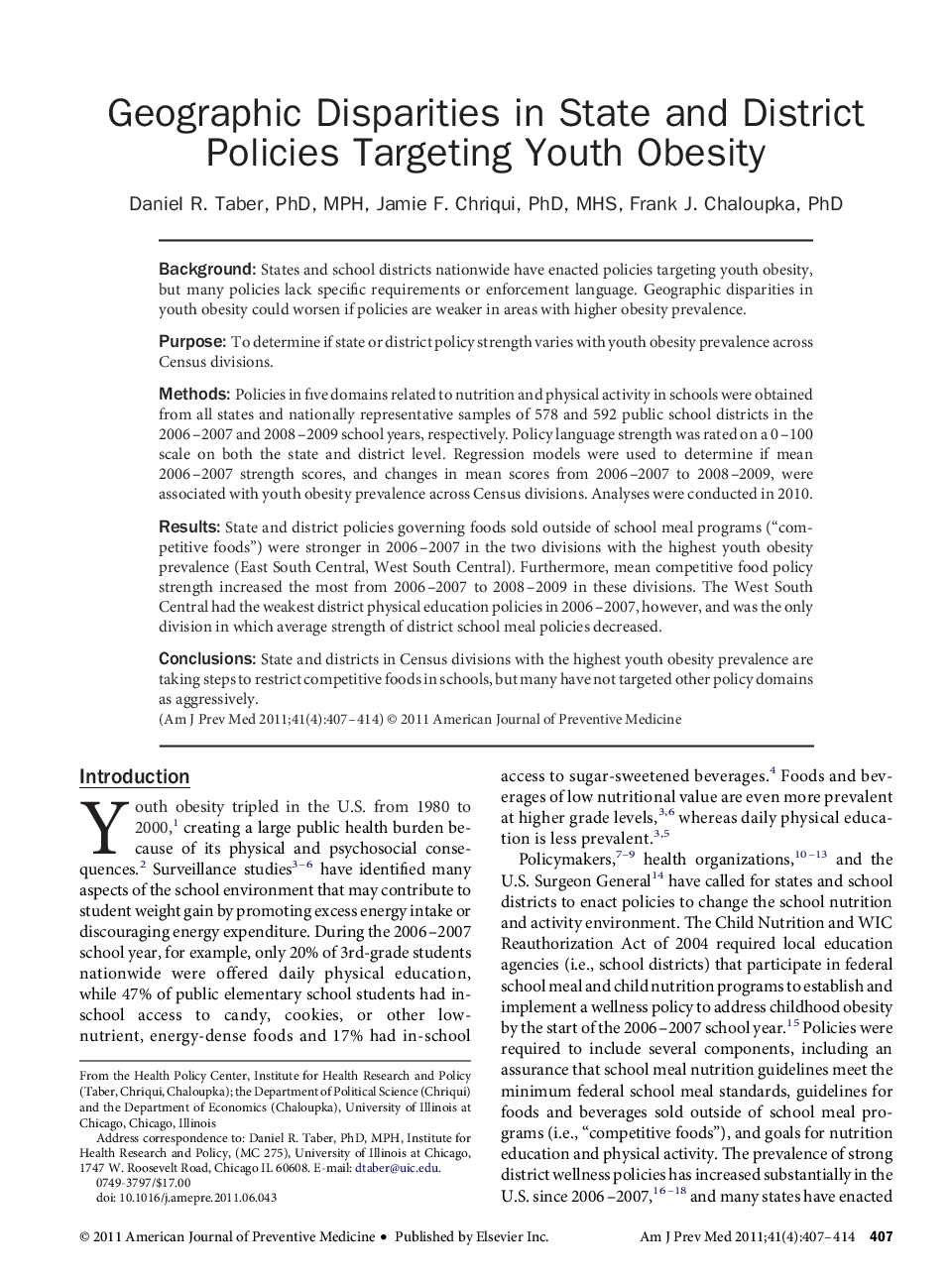| Article ID | Journal | Published Year | Pages | File Type |
|---|---|---|---|---|
| 6238488 | American Journal of Preventive Medicine | 2011 | 8 Pages |
BackgroundStates and school districts nationwide have enacted policies targeting youth obesity, but many policies lack specific requirements or enforcement language. Geographic disparities in youth obesity could worsen if policies are weaker in areas with higher obesity prevalence.PurposeTo determine if state or district policy strength varies with youth obesity prevalence across Census divisions.MethodsPolicies in five domains related to nutrition and physical activity in schools were obtained from all states and nationally representative samples of 578 and 592 public school districts in the 2006-2007 and 2008-2009 school years, respectively. Policy language strength was rated on a 0-100 scale on both the state and district level. Regression models were used to determine if mean 2006-2007 strength scores, and changes in mean scores from 2006-2007 to 2008-2009, were associated with youth obesity prevalence across Census divisions. Analyses were conducted in 2010.ResultsState and district policies governing foods sold outside of school meal programs (“competitive foods”) were stronger in 2006-2007 in the two divisions with the highest youth obesity prevalence (East South Central, West South Central). Furthermore, mean competitive food policy strength increased the most from 2006-2007 to 2008-2009 in these divisions. The West South Central had the weakest district physical education policies in 2006-2007, however, and was the only division in which average strength of district school meal policies decreased.ConclusionsState and districts in Census divisions with the highest youth obesity prevalence are taking steps to restrict competitive foods in schools, but many have not targeted other policy domains as aggressively.
